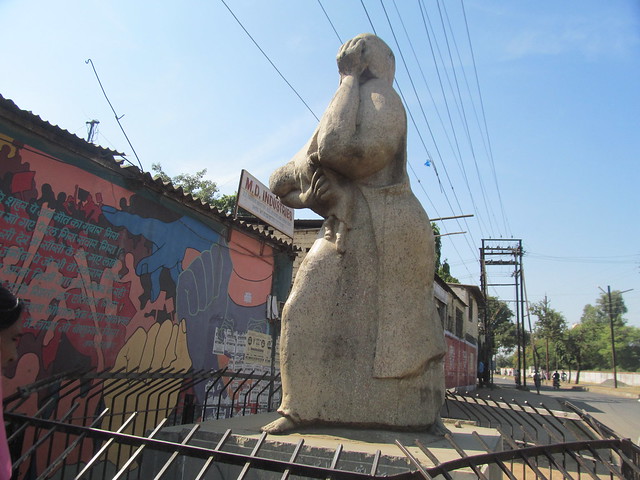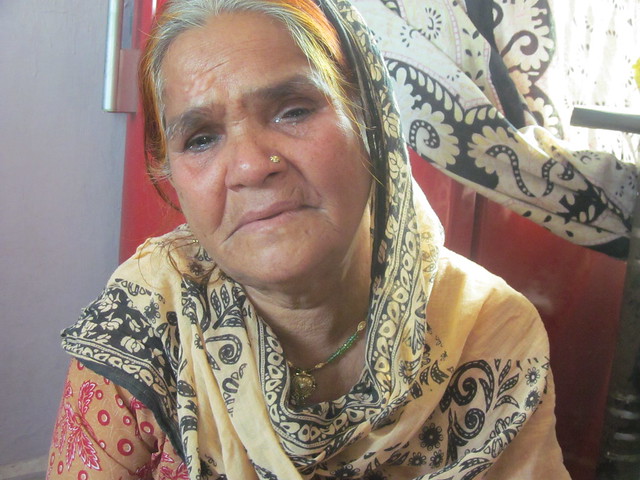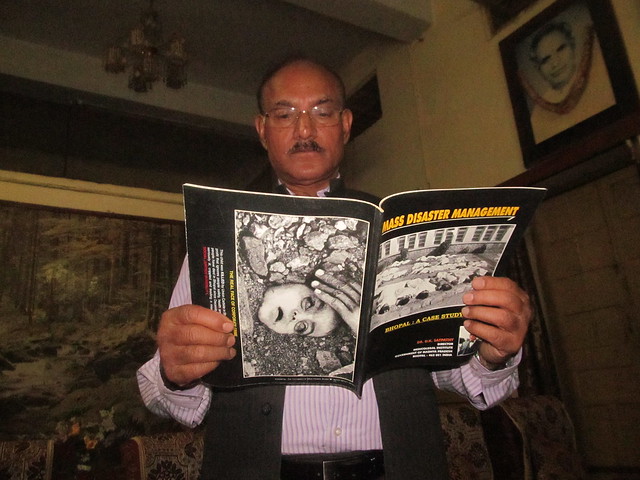It has been labeled as the world’s worst industrial disaster. Thirty years ago, on December 2-3 night, a cloud of deadly methyl-isocyanate enveloped the sleeping innocents in the neighbourhood of the Union Carbide plant that killed at least 3000, official figure, immediately and left thousands others suffering a lingering death. Even after three decades of struggle, justice remains a distant cry.
In this first of the six part series, TwoCircles.net attempts to recount the horror faced by the residents on that calamitous night.
By Mohd Ismail Khan, TwoCircles.net,
Bhopal: Aneesa Bi was at her uncle’s place near Bhopal Talkies on December 2, 1984. The family was having dinner when their eyes started to burn but they thought it was smoke from the kitchen. “But suddenly we started hearing screams, we came out and saw people running. Some were shouting ‘riots have broken near the mosques’, so we also ran for our lives. The whole street was full of dead bodies. Everywhere people were vomiting, coughing and dying of suffocation.”

Bhopal gas victims memorial statue
“Unforgettable, ghastly scenes. Each one of them is vivid in my memory,” says Aneesa Bi, now a fragile old woman, who coughs more than she speaks a reminder of the health problem she inherited for life that night.
As the 30th anniversary of the Bhopal Gas Disaster nears, memories flood the survivors, who still suffer the health impacts. Independent estimates suggest near to 5,000 people died in a single night and more than 20,000 in the weeks after while there were over half a million who suffered permanent injuries, making the Bhopal 1984 Union Carbide factory poisonous gas leak as the deadliest industrial catastrophe in the world.
The inadequate compensation, incomplete rehabilitation and inconsequential attempts at cleansing the contamination exemplify the pain they have suffered and continue to bear along with the three decades long struggle that the victims and survivors have kept alive, against the most powerful.
A campaigner for justice, Abdul Jabbar, a victim himself, aptly puts the feelings of hundreds and thousands of gas victims. “For some organizations and even the media, these anniversaries have become some kind of celebrations due to its glare. But for us it will be a day of mourning, a day when our pain increases many folds.”
Jabbar, who lost his parents in the tragedy, remembers the day when humans ran in desperation to save their lives. “There were no relations left; it was only a matter of life. It was difficult for mothers to save their children, for children to save their aged parents.”
Rayeesa Bi, who lost her husband and a child on that fateful night, says they didn’t understand the gravity of the situation at first. “Even when we were severely coughing and our eyes were smarting with pain, we didn’t realize it was due to the poisonous gas. We thought someone has burned chilies.” Her family stayed inside their house till it the dawn. “Our whole locality was emptied. We didn’t know where to run carrying our small children and old age parents with us.”
Next morning when she reached the Hamidia hospital, to her horror, she found it had turned into a mortuary. “Every single bed, I saw at least 10 dead bodies piled one over the other. For a moment, I thought we will die the same way.” She survived but her small child died due to acute diarrhea while her husband and father-in-law passed away because of respiratory disorder.
Closest from the now shut down Union Carbide plant is JP Nagar, the worst affected colony. Ram Yadav had a small milk dairy cum his home just across the road from the factory. Before midnight on December 2, he was chatting with his friends sitting on the verandah smoking a beedi on that chilly night. “First when we saw smoke shining in the dark night, we went closer to the main road to look at what was happening. We saw gas with huge speed leaking from the tower and forming a big cloud over the factory.”
Yadav and his friends thought it was just another factory operation and were actually enjoying the spectacle. “As a layman, we didn’t know what was happening, but when we saw men running out of factory screaming and falling unconscious on roads, we started to raise an alarm in our neighborhood. We screamed zehrili gas nikal rahee hai (poisonous gas is leaked), we shouted.”
Suddenly panic struck JP Nagar. People started running from their houses in the opposite direction of the factory. Yadav too ran along with his family, but in the panic, there was a stampede and he was crushed. Next thing he remembers was waking up at DIG Bungalow hospital with broken ribs and exposed skin turned dark and dry. Four days later when he returned to check for his cattle, all four buffalos were dead.
Chirunjibai Thakur, a resident of Teela Jamalpura, lost her husband in the disaster and now resides at the Gas Vidhwa (widow) colony. Even though her house was located almost at 6 km away from the Carbide factory then, the intensity was such that a virtual gas wall enveloped their house. “When our eyes started to itch, we thought someone was burning crackers. But when I looked outside, I just couldn’t see anything due to the thick gas layer all over the street. It was as if someone had dropped a chemical bomb.” Her family escaped to Shajahanabad, only to get unconscious at her relatives house there.

Gas widow couldn’t control her tears narrating her ordeal
Manifold tragedy manifest at hospitals
The most dramatic and shuddering scenes were at the hospital, which was overloaded with dead bodies and jammed with terrorized and dying crowd. Dr D K Satpathy, the then joint director of Medico Legal Institute of India, claims to have overseen nearly 5,000 postmortems in a week’s time, almost 1000 in a single night.
Dr Satpathy received a call from his superior, who asked him to rush to the hospital as “he said, ‘death toll is beyond our imagination’. When I reached Hamidia hospital, I saw people crying near the dead bodies of their loved ones. Many deceased showed swollen eyes and cough flowing from their mouth.”
At the casualty ward, there were piles and piles of dead bodies dumped by grieving relatives trying to travel out of Bhopal. There were just three doctors, including him, that night and they had a superhuman task of organizing dead bodies and performing postmortem to establish the exact reason of their death.
“In the initial 48 hours, we were just discharging our duty as robots. We didn’t have any sentiments because of the work load and of pressure to cope up with the situation in minimum resources available. But after 3-4 days, when I saw a three-month-old child on the lap of her dead mother, it definitely sent shock waves into my mind.”
Some distance away, the DIG bungalow was converted into a medical quick aid center. Survivors received treatment round the clock as it was flooded with injured people from different localities thronging in fighting for their lives. For days, generous people brought food and in general tried to help the victims.

Dr D K Satpathy
Saga of survival to ongoing struggle
Hajara Bi was just another bidee worker residing in a thatched house at JP Nagar slums when the poisonous gas affected everyone in her family. She remembers every minute detail of that cold chilly night. “We were sleeping covered in thick blankets when we started to feel suffocation. When we woke up in irritation, we found smoke inside our house; my husband went outside to enquire only to find gas all around. We started coughing and suffocation became intense.”
Like all others she along with her family ran for life. In the anxiety, the couple took only two of their children and forgot the third child, still asleep. They realized it only after reaching the hospital and returned to JP Nagar, which was almost evacuated by then. “There, I found some police officers and fire brigade personnel outside the factory trying to control the gas leak.”
Inside their house, thick gas had reduced visibility so her husband burnt some beedi paper waste for light. The four-year-old son unconscious, whom, she quickly wrapped in a blanket. They sat in the house the whole night with covered faces as they have any energy left to run for life.
The family fortunately survived that night but, still suffering from suffocation, when they came out in the morning, the scene was appalling. It was just dead bodies and people rolling on the road from intense soreness. On way to find a safe place at Sehore bypass they their neighbor’s family with two small children lying dead near tree. “It was the most dreadful thing to find people you meet daily dead in such a horrible condition.”
Fighting since three decades to heal the void created by the helplessness of those fateful nights and days, Hajara Bi is now a prominent activist with the ‘International Campaign for Justice’. She remarks poignantly: “If I remember something from those days, it is our helplessness and how human beings can be so advance yet so vulnerable to our own advancements.”
Related:
Bhopal – Three decades of Struggle

